《1.Introduction》
1.Introduction
Floods are and will continue to be a key problem in many countries and especially in the People’s Republic of China, where rain intensity and flood discharge per square kilometer are close to the highest in world data. China has a great deal of experience in flood mitigation and has built a large portion of the world’s dams since 1950, including very large dams and dams with many efficient innovations by Chinese engineers.
This paper, however, focuses on the dams of other countries; it is mainly devoted to lessons from dam accidents linked to floods over the past two centuries, and to possible improvements based on recent technical progress. It is predominantly based on the reports and bulletins of the International Commission on Large Dams (ICOLD). ICOLD classifies large dams as those that are higher than 15 m or that store over 3 hm3 [1].
The analysis below is separated into embankments and concrete dams. Floods from ice and snow melt are not studied because such floods are very specific and cause only a small proportion of dam accidents. No reference is made to tailing dams, which have specific risks.
《2.Basic data on extreme rains and floods》
2.Basic data on extreme rains and floods
Many studies have been devoted to extreme flood evaluation, especially in the past, and have used various theories and methods. The results vary with the method used and with the people using the methods; a significant number of dam failures have been linked with huge under-evaluations. No method of evaluation has had full success, and all appear to be questionable on some points. A reasonable conclusion is that a serious uncertainty exists for evaluating flood values of very low probability. Although this uncertainty currently seems to be less important for yearly probabilities of 1/100 or 1/1000, the impacts of climate change may seriously affect these probability values. It is likely that all flood evaluations will remain very uncertain, aside from yearly floods.
Therefore, it seems advisable to use several solutions in order to avoid significant under-evaluations by a single method. For extreme floods, it is possible to have a range of magnitude if referring to extreme world data on rains and floods according to the catchment area; Chinese data (Table 1) are very close to the world maxima (Table 2) [2].
《 Table 1》
Table 1 Chinese rainfall data (mm).

《 Table 2》
Table 2 World maximal floods registered.

The duration of an extreme flood increases with the catchment area: usually 2–3 h for a catchment of 1 km2, 5–20 h for a catchment of 100–1000 km2, or several days for a catchment over 100 000 km2. The extreme rain depth corresponding to an extreme world flood has been found to be about the same irregardless of catchment area, and is reported as being in the range of 500 mm for various catchment areas (Table 1). Extreme flood volume per square kilometer of catchment area has been found to be in the range of 0.5 hm3, but the duration of such floods varies considerably. For such volumes, almost all the floods included water flow from rainfall; for a catchment area of 1 km2, the extreme world rain volume of 0.5 hm3 is in accordance with a peak of 100 m3·s–1 and a flood of a few hours.
Thus, for a catchment area under 1000 km2, a very rough preliminary evaluation of extreme floods may be given, according to the catchment area and to the extreme rainfall registered in the climatic area as compared with the extreme rainfall world values. Such an evaluation may at least favor comparisons between dams of the same country or climatic area while avoiding huge under-evaluations. Simple adjustments may be made according to the catchment shape. The formula q = k·S0.75, with k as a regional coefficient and S as the catchment area, may give a preliminary evaluation [2,3].
《3.Embankments (beyond those in China)》
3.Embankments (beyond those in China)
《3.1. Existing dams》
3.1. Existing dams
Existing dams may be classified according to the following criteria [1]:
• Height: About 5000 dams are higher than 30 m, 15 000 are between 15 m and 30 m high, and hundreds of thousands are between 5 m and 15 m high.
• Storage: Hundreds of dams store over 500 hm3, 5000 store between 10 hm3 and 500 hm3, and over 100 000 store between 0.1 hm3 and 10 hm3; of the latter, 15 000 are classified by ICOLD as “large dams” because they store over 3 hm3.
• Material: About 2500 dams are rockfill; most are higher than 30 m. Within earthfill dams, the quality of material has varied considerably, with a significant impact on flood risk. Since 1950 in industrialized countries, and since 1980 in other countries, most large earthfill dams have included wide sections of well-compacted clay materials, which better withstand overtopping; the breaches from floods widen slowly. Before 1930, the quality of earthfill was rather poor in many dams. Key progress was first made in the US, with better theoretical knowledge and efficient equipment for compaction. However, the low cost of labor in many Asian countries led to many mediumor low-height embankment dams being built without heavy equipment—and thus with questionable earthfill quality—up until 1980. For those dams, breaches from overtopping could extend widely and quickly.
• Spillway: The choice of spillway varies with the discharge as well as with the country, traditions, and regulations. According to the ICOLD world register of dams [1] and bulletin No. 83. [4], most dams with a discharge of under 1000 m3·s–1 have a single free-flow spillway. A majority of dams with a discharge over 1000 m3·s–1 have a single gated spillway. Accordingly, the reservoirs for most dams storing over 10 hm3—which requires a catchment area of hundreds or thousands of square kilometers and which thus indicates significant flood values— are gated, while most reservoirs storing about 1 hm3 and requiring small catchment areas have a single free-flow spillway. Few existing dams associate a gated and an un-gated spillway, except in Italy, due to a specific regulation there.
《3.2. Flood failures of embankment dams in operation and remedies》
3.2. Flood failures of embankment dams in operation and remedies
The following data are mainly from ICOLD bulletins [3,5,6] and from the 1974 ICOLD report [7]. They refer to large dams—that is, dams higher than 15 m or storing over 3 hm3. There are about 25 000 large embankment dams (not including dams in China), of which 10% were built before 1930.
Although some dam failures by flood were structural spillway failures, most were by crest overtopping and erosion of the downstream face and toe. The time for creating and widening a breach varies with the dam’s material:
• Well-compacted clay materials may withstand a 0.5 m nappe depth for hours, and the breach may widen slowly.
• Poorly compacted materials may be breached by a 0.3 m nappe depth in one hour, and the breach may widen quickly.
• Rockfill may withstand a 1 m nappe depth for hours, but abreach may widen quickly.
The duration of overtopping is thus a key element of risk. Failures of 70 large dams in operation by flood have been reported. Many may not have been reported; however, this value very probably includes the great majority of failures of large reservoirs or failures with many fatalities.
The rate of failure has thus been 0.3% or 0.4% for an average life of 50 years, which is equivalent to an average yearly probability of about 6 × 10–5. This rate is about the same for dams higher than 30 m. The rate of failure has been over 1 × 10–4 per year for dams built before 1930: Thirty failures were reported for 2000–3000 dams, but many were probably not reported. For dams built after 1930, about 40 failures were reported for over 20 000 dams and an average 40 years of life; that is, about 5 × 10–5 were reported per year. The rate of reported failures is higher for reservoirs storing between 10 hm3 and 500 hm3; hundreds were built before 1930, mainly in the US, and 15 failed, with a rate close to 1 × 10–3 per year. About 5000 were built later and about 40 failed, with a rate of about 2 × 10–4 per year. The rate of reported failure has been much lower for smaller reservoirs. Out of the over 15 000 of such embankment dams that were built after 1930, a dozen failures have been reported, with a rate of under 2 × 10–5 per year, and few fatalities reported.
The total water release was 2500 hm3 for the failures of dams storing over 10 hm3—100 times more than for smaller reservoirs. Of these larger reservoirs, 15 failures caused a total of over 10 000 fatalities. Some failures of smaller reservoirs also caused fatalities, for a total of several hundred.
The much lower rate of failure of smaller reservoirs may be partly explained by failures not being reported, by the duration of floods and overtopping, and by the smaller nappe depths of the embankment overtopping by a low total discharge.
Another reason for the difference in failure rates seems to be the fact that most gated dams are for large discharges, that is, for large catchment areas and storage. In addition, the margin of safety linked with the freeboard is much higher for a free-flow spillway than for a gated one. A significant number of failures have been caused by total or partial gate jamming.
Another reason for the higher risk for larger reservoirs may be a higher uncertainty for flood evaluation on catchment areas of hundreds or thousands of square kilometers; for catchment areas of a few square kilometers, a considerable amount of regional data exists on extreme floods in similar catchments, which may have helped in the prevention of huge under-evaluations.
No failures were reported for the hundreds of reservoirs storing over 500 hm3, perhaps because for relevant very large catchments, the extreme flood peaks are not much higher than the well-known 1/10 or 1/100 flood probabilities.
Three failures caused over 1000 fatalities:
• In 1868, the 200-year-old Iruhaike Dam in Japan, which was 28 m high and 700 m long, and which stored 18 hm3, failed with 1200 fatalities.
• Many dams built in the US before 1930 failed, most with few or no fatalities. However, the South Fork Dam, which was 30 years old, 21 m high and 280 m long, and which stored 20 hm3, failed in 1889 with 2200 fatalities. The catchment area was 125 km2, and the spillway capacity was about 100 m3·s–1. The maximum discharge of flood from this failure reached 10 000 m3·s–1, with a breach width of 100 m. The value of the damages was close to the equivalent of $1 billion USD in 2015 [3].
• Many large embankment dams were built in India before 1980, often without much equipment. Seven dams storing between 20 hm3 and 400 hm3 failed. In 1979, the Machu Dam, which was 10 years old, 25 m high, and 4000 m long, and which stored 100 hm3, failed after several hours of overtopping (Fig. 1). Several breaches reached a surprising total length of 1800 m. The catchment area was 1900 km2, and the gated spillway was designed for 9000 m3·s–1; the inflow was 14 000 m3·s–1, and the maximum discharge of flood from failure was 80 000 m3·s–1. Twenty percent of the gates did not open, and the alarm system was limited. In total, 5000– 10 000 people died, 150 000 were displaced, and 10 000 habitations were destroyed. The dam was rebuilt with a spillway capacity of 26 000 m3·s–1.
《Fig. 1》

Fig. 1. The Machu Dam failure.
The failures described above may be compared with the 1975 failure of the Banqiao Dam in China, which was 25 m high and 2000 m long, and which stored 500 hm3 [8]. Its catchment area was 800 km2, and the inflow was 13 000 m3·s–1—close to the world maximum for such a catchment. The spillway capacity was a few thousand cubic meters per second. The breach length was 400 m, and the maximum discharge of flood from failure was 80 000 m3·s–1. As a result of this and other dam failures that occurred at the same time, millions of people were displaced, tens of thousands of people died directly, and many others died from indirect causes. A failure in communications resulted in a lack of efficient alarms. The dam was rebuilt in 1991.
Surprisingly, 12 failures by flood (outside of China) from 5000 dams higher than 30 m [9] caused a total number of fatalities that was limited to a few hundred; the shortage of these dams was between 10 hm3 and 400 hm3 (100 hm3 on average), and their average length was 250 m. This low fatality rate may be explained by the fact that 95% of these high dams were built after 1930 with a better quality than lower dams, and that the breaches were limited.
For example, the Euclides da Cunha Dam in Brazil was built in 1958 and failed in 1977. This dam was 40 m high and 300 m long, and stored 25 hm3. For a catchment area of 4300 km2, the gated spillway capacity was 3000 m3·s–1. The inflow was 2000 m3·s–1, but the gates were kept closed due to human error. The embankment withstood seven hours of overtopping up to 1 m, and the breach width was limited to 100 m. The maximum discharge of flood from failure, which was in the range of 10 000 m3·s–1, caused the failure of the dam. However, there were no fatalities. The dam was rebuilt with an additional (free-flow) spillway.
An often-overlooked risk is the failure of a large reservoir by the sudden release or failure of a smaller upstream reservoir (either a dam or a natural reservoir). Many fatalities have also been caused by the opening of gates without relevant information from downstream.
《3.3. Design improvements》
3.3. Design improvements
Since 1980, the lessons learned from these many accidents have favored various improvements in design, especially in freeflow spillways and fuse devices [7]. Traditional free-flow spillways, such as those with the Creager shape, have a limited discharge of about 2 m3·s–1 for a 1 m nappe depth and 10 m3·s–1 for a 3 m depth. In the past decade, new shapes of labyrinth weirs, such as Piano Key (PK) Weirs (Figs. 2–4), increased this discharge up to threefold. PK Weirs have been applied to floods of hundreds or thousands of cubic meters per second. This weir shape may apply to very large floods, such as a flood of 70 000 m3·s–1 for the Inga design in Congo. It has also been applied to existing freeflow spillways for increasing storage or safety [10].
《Fig. 2》
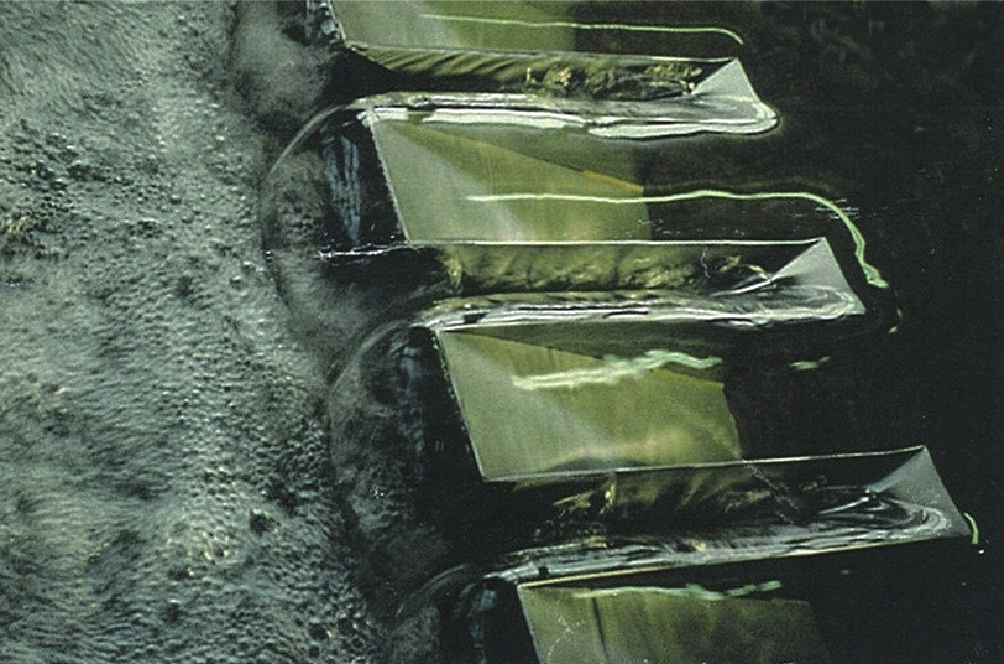
Fig. 2. A PK Weirs model test.
《Fig. 3》
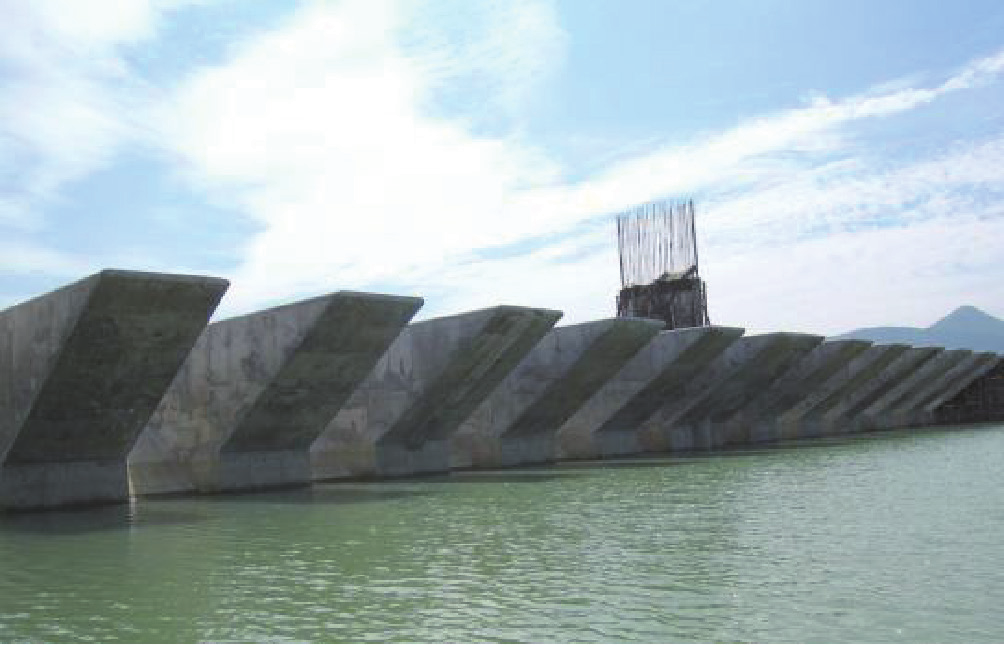
Fig. 3. The Van Phong PK Weir in Vietnam.
《Fig. 4》
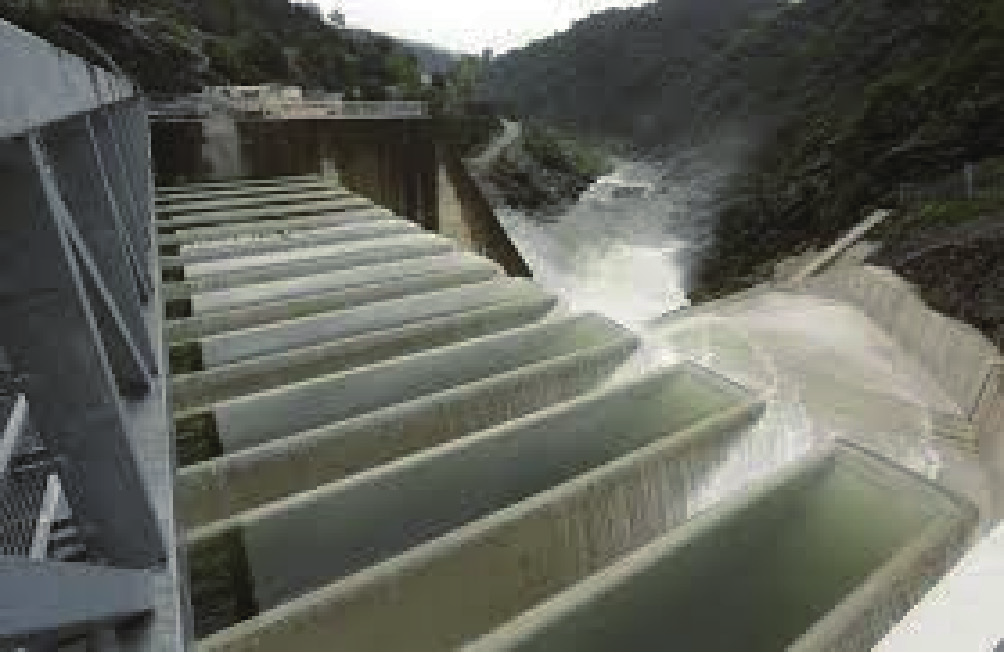
Fig. 4. The Malarce PK Weir in France.
A totally different solution of free-flow discharge has been used for low dams and for floods under about 100 m3·s–1; it involves discharging with a reduced nappe depth above long parts of the embankment. Various linings have been used, from grassin the UK, with a nappe depth of up to 0.5 m, to roller-compacted concrete (RCC) in the US, with a higher nappe depth. Nappe depths of 0.3 m for one or two hours have in fact been accepted by well-compacted clay embankments. The great advantage of this solution is that it very significantly increases the storage of low dams, whose usual purpose is storage; the cost per cubic meter of water may be much reduced. Protection of the downstream toe may be efficient at a low cost.
For several decades, a third solution—fuse devices—has been added to the traditional solutions of gated or free-flow spillways. Fuse devices are structures that open and are lost during exceptional floods, and that are replaced in the weeks or months after a flood. They are much less expensive than gated spillways and may be used for many extreme floods.
About 100 earth fuse plugs have been built, mainly in the 1980s in China and the US, for a capacity of thousands of cubic meters per second and with a height usually between 5 m and 10 m. Although they may be very cost effective, they require a specific topography; this may explain their limited success. Their long-term efficiency may be questionable, depending on the material.
Over a period of about 20 years, concrete fuse elements with different shapes have been used for about 100 dams, as well as for discharges from several hundred cubic meters per second (Fig. 5) up to 20 000 m3·s–1 (Fig. 6). Such elements may apply to a great majority of dams, both existing and new ones. They may be overtopped by ordinary floods and may tilt in sequence for floods over a 1/100 or 1/1000 probability. Their cost per cubic meter per second is usually a small part of a gated dam’s cost. Concrete fuse elements may have various shapes, including labyrinth shapes (fuse gates), as shown in Fig. 7.
《Fig. 5》
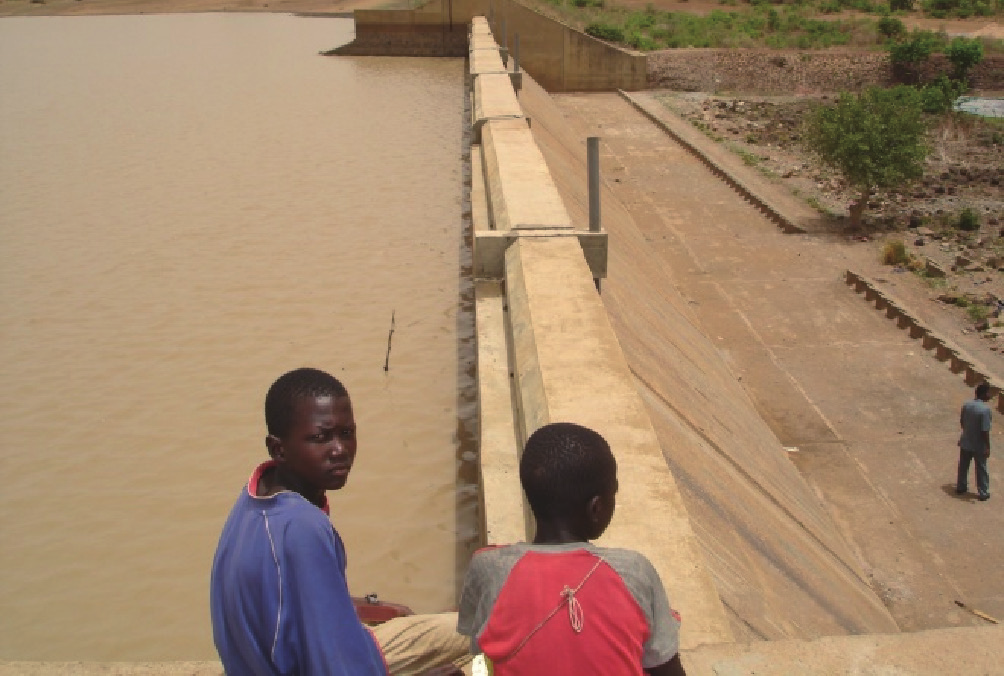
Fig. 5. Concrete fuse plugs for small dams: Wedbila in Burkina Faso.
《Fig. 6》
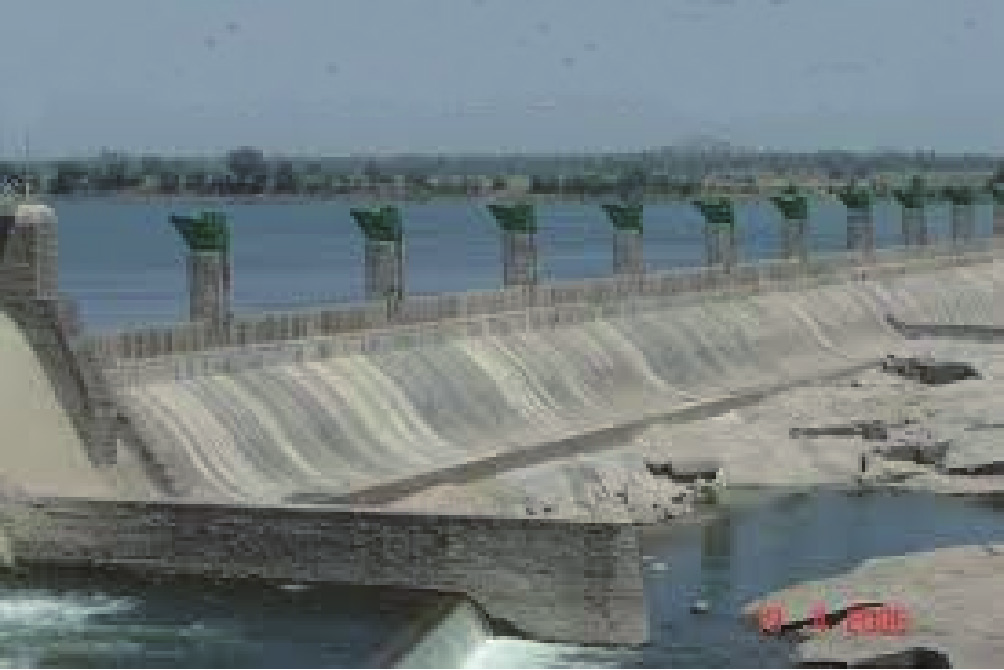
Fig. 6. A flood over the Wanak Bori fuse gates.
《Fig. 7》

Fig. 7. Terminus fuse gates in the US.
Improvements in free-flow spillways and the cost efficiency of fuse devices favor the association of two spillways for discharging extreme floods that are then evaluated with some margin. Associating a labyrinth fixed spillway such as PK Weirs with a spillway of fuse plugs may increase the discharge of a traditional free-flow spillway for the same nappe depth by fivefold [10].
A gated spillway may be designed for discharging a yearly flood or a 1/10 flood and may be completed by a labyrinth free flow spillway. Operators may not be necessary except for the few weeks or days per year when huge rains are foreseen. For very large extreme discharges, such as those over 10 000 m3·s–1, a gated spillway may be designed for the 1/1000 flood and completed by fuse plugs that are used for extreme floods or in the case of total gate jamming. This solution is less expensive and safer than the traditional fully gated solution.
The association of two spillways may be much better than the traditional choice of a single gated spillway or a simple freeflow spillway. However, existing local traditions, usual criteria, or official regulations (such as the traditional “design flood”) may prevent this choice. A reference to the safety check flood appears to be better justified than a reference to the design flood.
《3.4. Failures by embankment floods during construction》
3.4. Failures by embankment floods during construction
Embankment failure by flooding during construction is often overlooked, but has been and remains a very serious risk. Over 10 failures by overtopping during construction have been reported for embankments higher than 50 m with significant storage, and many more accidents may not have been reported [9].
Failures have also been linked with construction delays and have happened when the reservoir was quite full. The probability of overtopping may thus be higher than 1%, with an impact that may vary widely depending on the reservoir level that was reached at the time of failure.
• In 1961, the 50 m high Panshet Earthfill Dam in India was largely completed, and stored 200 hm3 at the time of failure, when it caused over 1000 fatalities and the failure of a downstream masonry dam storing 140 hm3.
• In 1961, the Oros Rockfill Dam in Brazil, which was designed to be 54 m high with 700 hm3 of final storage, failed when it was 35 m high and released 100 hm3. About 100 000 people were evacuated and over 100 were drowned.
• In 1964, the Hell Hole Rockfill Dam in the US, which was designed to be 125 m high with a storage of 2600 hm3, failed when it was 40 m high, releasing 50 hm3.
• In 1967, the 60 m high Sempor Rockfill Dam in Indonesia, with a final storage of 56 hm3, failed during construction, causing 2000 fatalities.
Since 1930, half of all failures and most relevant fatalities for embankment dams higher than 30 m have been by overtopping during construction. In 2014, the core of the Tokwe Mukosi Rockfill Dam in Zimbabwe, which was 90 m high and had a storage of 1700 hm3, was overtopped when it was completed and came very close to a failure that would have been the largest water release by failure in the world (Fig. 8); 60 000 people were displaced.
《Fig. 8》

Fig. 8. The failure of the Tokwe Mukosi Dam.
There is also a huge risk for high earthfill cofferdams to be overtopped by floods. An additional risk is the failure by internal erosion of such cofferdams, which may be built very quickly with reduced foundation care. The same risk applies to the earth cofferdams of concrete dams; this risk is usually overlooked.
The traditional principle in industrialized countries has been to divert a flood of 1/100 yearly probability during operation. This solution may not be ideal for large dams in Asia, where the discharges of such floods are high and diversion tunnels and cofferdams are very costly. In addition, there is usually a dry season of eight months in Asia, with the probability of a high flood being limited to one or two months. The best solution for rockfill dams may be to divert a much lower discharge, in order to complete the dam to a few meters above the river level within a dry season, and to accept and accordingly adapt to overtopping during a rainy season. This method was used very successfully in the high Cua Dat Dam in Vietnam, and could apply to many rockfill dams. The need for costly diversion tunnels at a low level is thus much reduced; in order to avoid the failure of a nearly completed dam, it is possible to add unlined horizontal tunnels at the mid height of the dam at a low cost.
These solutions for rockfill dams, which make up a large proportion of high dams, may be less expensive and safer than traditional solutions in most countries. A total review of traditional principles may therefore be justified.
《3.5. Alarm systems》
3.5. Alarm systems
Aside from progress in dam design, the efficiency of alarm systems is a key element of human safety. It is also one that applies especially well now to the failure of embankments by flood because the probability of huge rains is known days in advance and that of possible overtopping hours in advance, and because modern telecommunication is efficient worldwide. An alarm system created for the risk of dam failure will also be extremely useful for 1/100 or 1/1000 floods; the probability of such floods may be increased by climate change.
Most fatalities from past embankment failures by flood would have been avoided by efficient alarm systems.
《3.6. Other failures of embankment dams》
3.6. Other failures of embankment dams
Aside from floods, the main cause of dam failure outside of China has been internal erosion, as it has been within China; the incidences of dam failures by internal erosion add up to about half the number of failures by flood. Although the total number of fatalities from such failures amounts to 10% of the fatalities from flood failures, this risk should not be overlooked. The 90 m high Teton Dam in the US failed in 1976 (Fig. 9), displacing 30 000 people within two hours during the day; 10 people were drowned, but thousands would probably have drowned if the failure had occurred at night. The Gouhou Dam night failure in China in 1993 caused many fatalities.
《Fig. 9》

Fig. 9. The Teton Dam failure, 1976 (US).
Another risk is the liquefaction by earthquake of sandy material or foundations of dams. The failure of the San Fernando Dam in the US in 1961 was close to a disaster, and tens of thousands of people were displaced.
《4.Concrete dam failure (beyond China)》
4.Concrete dam failure (beyond China)
There are about 6000 large concrete dams—that is, dams higher than 15 m or storing over 3 hm3. About 15 of these dams have failed, of which only three were higher than 30 m. All failures occurred prior to 1960, and at the first filling, due to a poor foundation. One failure by flood was reported: The Zerbino, which was a rather thin gravity dam in Italy, 15 m high and storing 10 hm3, failed in 1985, causing 100 fatalities, after a 2 m overtopping by flood. A 40 m high concrete gravity dam on the same reservoir did not fail.
The probability of failure by flood for concrete dams thus appears to be rather low, especially for the thousands of dams that are higher than 30 m, which have a failure rate of under 10–5 per year. However, failure is sudden and can hardly be foreseen in advance.
The main risk from flood for concrete dams may be the risk to high earthfill cofferdams. It may be safer to accept concrete dam overtopping during construction, whether foreseen or unexpected, this practice has been successful for many dams.
《5.Masonry dams (beyond those in China)》
5.Masonry dams (beyond those in China)The number of masonry dams is not well known, but may be about 1000. This number mainly comprises gravity dams built in industrial countries before 1930, and up until 1980 in Asia. About 20 failures have been reported, of which seven were by flood—all for dams built before 1930. Most failures were through the dam body; this is a key difference from concrete dams, which nearly always fail by foundation. The ris from flood remains significant for low or high dams, especially if gated.
《6.Mitigation of floods by dams》
6.Mitigation of floods by dams
Outside of China, about 10% of large dams are partly devoted to flood mitigation, and 10% are totally devoted to it (primarily in the US). Future need for flood mitigation may be much higher in many countries because climatic change may increase the yearly probability of rain by 10% or 20% and that of relevant floods by over 20%. A flood value that now has a yearly probability of 1/100 may have a 1/10 probability in future. It may be very useful in the future to better use existing or new dams, which were mainly designed for hydropower or irrigation, for the additional purpose of flood mitigation.
A reasonable target is usually to reduce the peak of a flood with a yearly probability of 1/100 by about 30%. A cost-effective solution may be to associate a gated spillway, which may spill the yearly flood (or 20% more), with a labyrinth free-flow spillway. For significant catchment areas, the probable peak value of a huge flood may now be roughly evaluated a few hours in advance, and gates can be opened one or two hours in advance to create storage for a part of the flood peak.
In fact, the necessary storage is usually rather low. The volume of a flood of 1/100 probability is in the range of 0.1 m in depth on the catchment area and the part requiring storage is about 20% of the flood volume, that is 20 000 m3·km–2 of catchment area—a small part of the yearly discharge and storage of many dams. (The average world yearly discharge is 300 000 m3·km–2.)
This solution may apply to many existing free-flow spillways [11]: It is possible to cut the upper part of the spillway by several meters and place one or two gates and labyrinth structures. This solution may favor flood mitigation as well as dam safety, and may increase storage. For new dams, associating a gated spillway discharging the approximate volume of the yearly flood with a labyrinth spillway may be the best solution. Additional safety may be achieved by fuse devices.
《7.Prevailing design criteria and regulations》
7.Prevailing design criteria and regulations
Prevailing design criteria and regulations differ widely according to country, and are often based on old data and traditions. For the same site, the dam design could vary considerably if it were applied under the rules of various countries. All these criteria and regulations may require an in-depth review based on experiences and recently available solutions. They should not prevent the association of several spillways, which appears to be a very promising solution but which is not much used now [12,13].
《8.Conclusions》
8.Conclusions
Half of dam failures and most of the associated fatalities have been caused by floods, a risk that may be increased by the impact of climate change on floods. The risk is low for concrete dams, and the main risk comes from the thousands of embankment dams that store over 10 hm3, especially those with a single gated spillway. Recent progress in free-flow spillways, fuse devices, and alarm systems is important. The association of two spillways, a solution that has been often overlooked in the past, may increase a dam’s safety and favor flood mitigation. Existing regulations may deserve an in-depth review in order to optimize the dams designed under them.
The risk from floods during the construction of high embankments is overlooked, and traditional solutions may be unadapted to data for Asia.














 京公网安备 11010502051620号
京公网安备 11010502051620号




